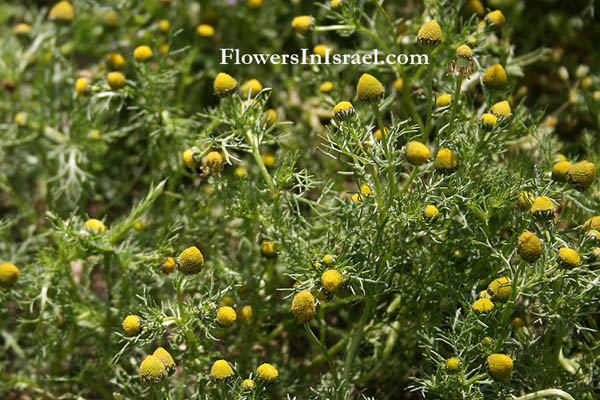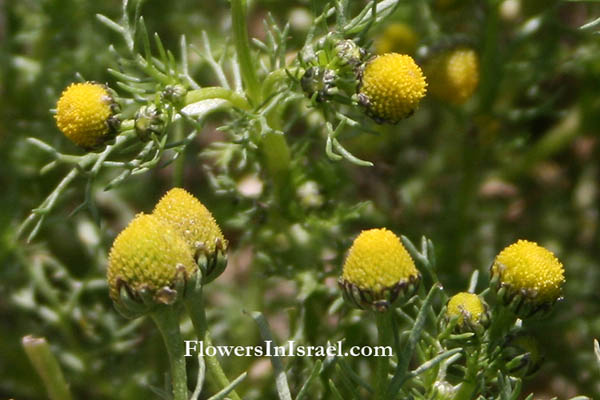Hebrew: בבונג זהוב, Arabic: البابونج الذهبي
| Scientific name: | Matricaria aurea (Loefl.) Svhultz Bip. | |
| Scientific name: | Chamomilla aurea (Loefl.) Gay ex Cosson & Kralik | |
| Common name: | Golden Chamomile | |
| Hebrew name: | בבונג זהוב | |
| Arabic name: | البابونج الذهبي | |
| Family: | Compositae / Asteraceae, מורכבים |

|
| Life form: | Annual | |
| Stems: | Up to 20 cm tall; branched; prostrate to erect, glabrous | |
| Leaves: | Alternate, dissected once | |
| Inflorescence: | Peduncles 0.5-2.5cm; capitula 1-60, 4-7mm in diameter; involucral bracts with a brown margin | |
| Flowers: | Yellow tubular florets, 4-lobed | |
| Fruits / pods: | cypsela oblong-ovoid, brownish, mildly 3-ribbed; pappus absent | |
| Flowering Period: | February, March, April, May | |
| Habitat: | Nutrient-rich soils, ruderal | |
| Distribution: | Mediterranean Woodlands and Shrublands, Semi-steppe shrublands, Shrub-steppes, Deserts and extreme deserts | |
| Chorotype: | Med - Irano-Turanian | |
| Summer shedding: | Ephemeral |

Derivation of the botanical name: Matricaria, Latin matrix, the womb; mater, mother; caries, decay; because of its one-time medical use in affections of the uterus. aurea, golden. Chamomilla, from the Latin chamaemelon, "chamomille or earth-apple," referring to the smell of the blossoms. The Hebrew name: בבונג, babunag from arabic بَابُونِج (babunag).
See the list of Medicinal herbs in Israel, the parts used and their medical uses to treat various diseases. |